Article directory
Basic use
Project directory and file description

manage.py A command line tool in django that manages the __init__.py empty file of the django project and tells python that this directory is a python package
setting.py Configuration file, including database information, debugging flags, static files, etc.
urls.py URL declaration of Django project
wsgi.py Used for deployment server
Simple test
-
Create new views.py in the project directory
-
from django.http import HttpResponse #响应前端页面对应的模块 #视图函数 def index(request): return HttpResponse('Hello World') -
Open in urls.py
-
from django.contrib import admin from django.urls import path from . import views#同级目录下导入Views文件作为模块使用 urlpatterns = [ path('admin/', admin.site.urls), path('index/', views.index), ] -
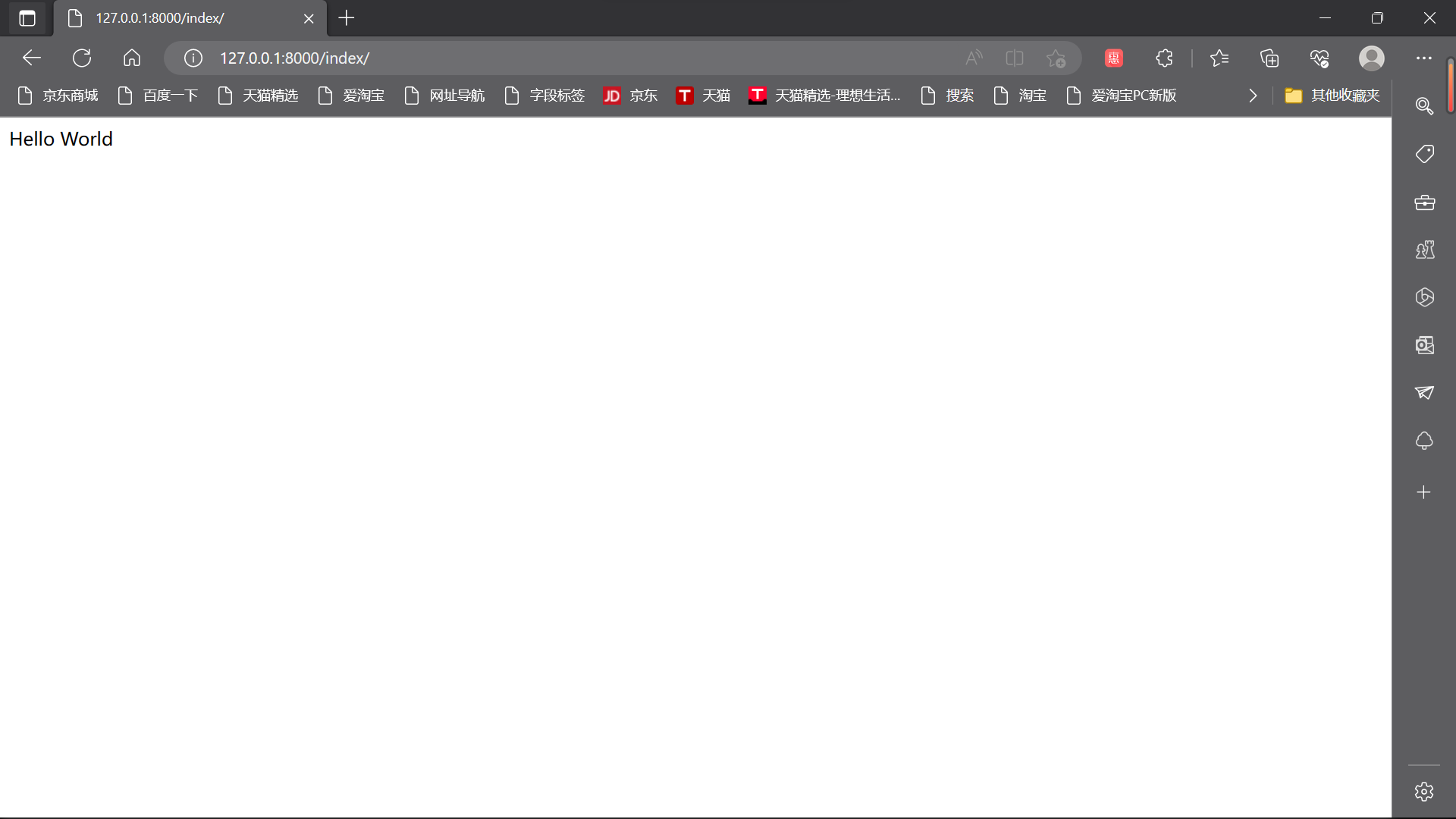
The role of urls.py
URL configuration (URLconf) is like the directory of websites supported by Django. Its essence is a mapping table between URL patterns and the view functions to be called for that URL pattern. This way you tell Django to call that code for that URL. The loading of the url starts from the configuration file
URL parameter passing and parameter limitation
No parameter restrictions
-
views.py creates a new function as follows
-
def names(request,name,age): return HttpResponse("名字:{},年龄:{}".format(name,age)) -
in urls:
urlpatterns = [ path('admin/', admin.site.urls), path('inf/<name>/<age>',views.names) ] -
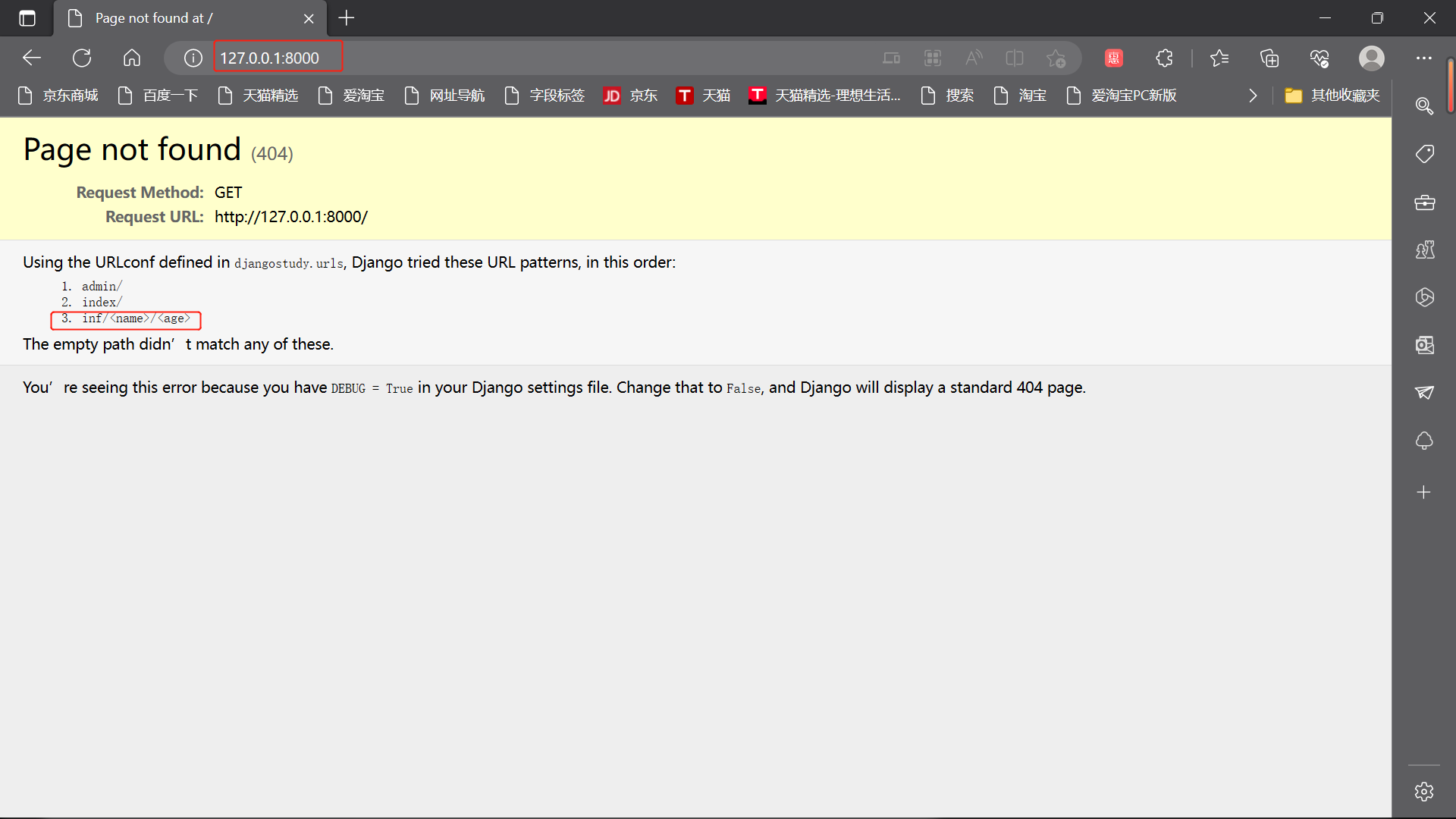
-
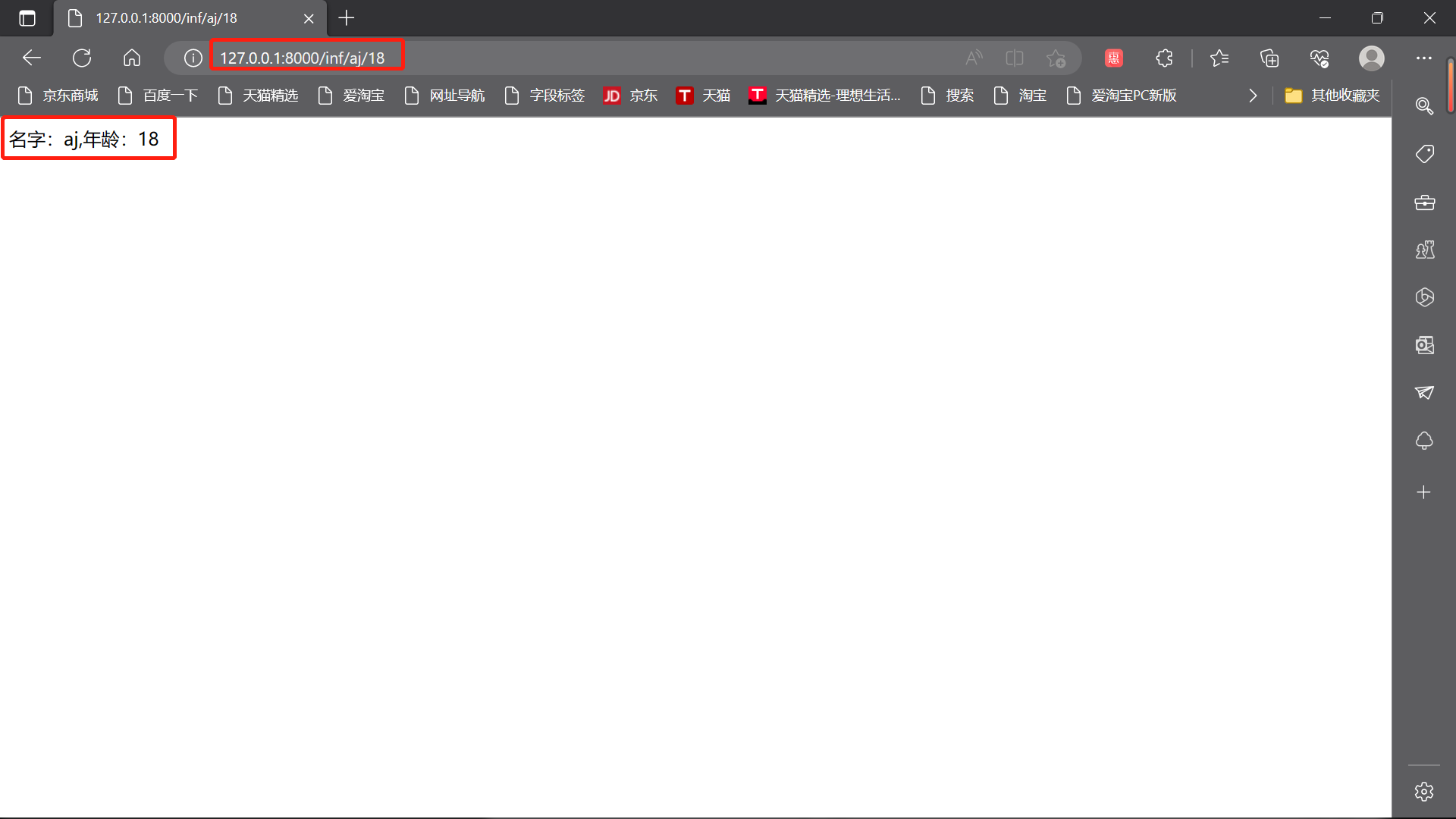
Converter-parameter qualification
Default supported converters
str: matches a non-empty string except the path separator (/), this is the default form
int: matches positive integers, including 0.
slug: Matches a string consisting of letters, numbers, dashes, and underscores.
uuid: Match formatted uuid, such as 075194d3-6885-417e-a8a8-6c931e272f00.
path: matches any non-empty string, including path separators
-
view.py
def names2(request,name,age): return HttpResponse("名字:{},年龄:{}".format(name,age)) -
urls.py
urlpatterns = [ path('admin/', admin.site.urls), path('inf2/<slug:name>/<int:age>',views.names2) ]
re_path regular matching
-
Import modules in urls.py
-
from django.urls import path,re_path -
Format
urlpatterns = [ path('admin/', admin.site.urls), re_path('^inf2/(?P<name>[A-z]{4,12})/(?P<age>[0-9][0-9])/$',views.names2) ]The relationship between projects and applications

Create new APP
- ubuntu creates:
python manage.py startapp +app名 - Note (must cddao to the project directory to use manage.py):

Register APP
Register in settings.py of the main project
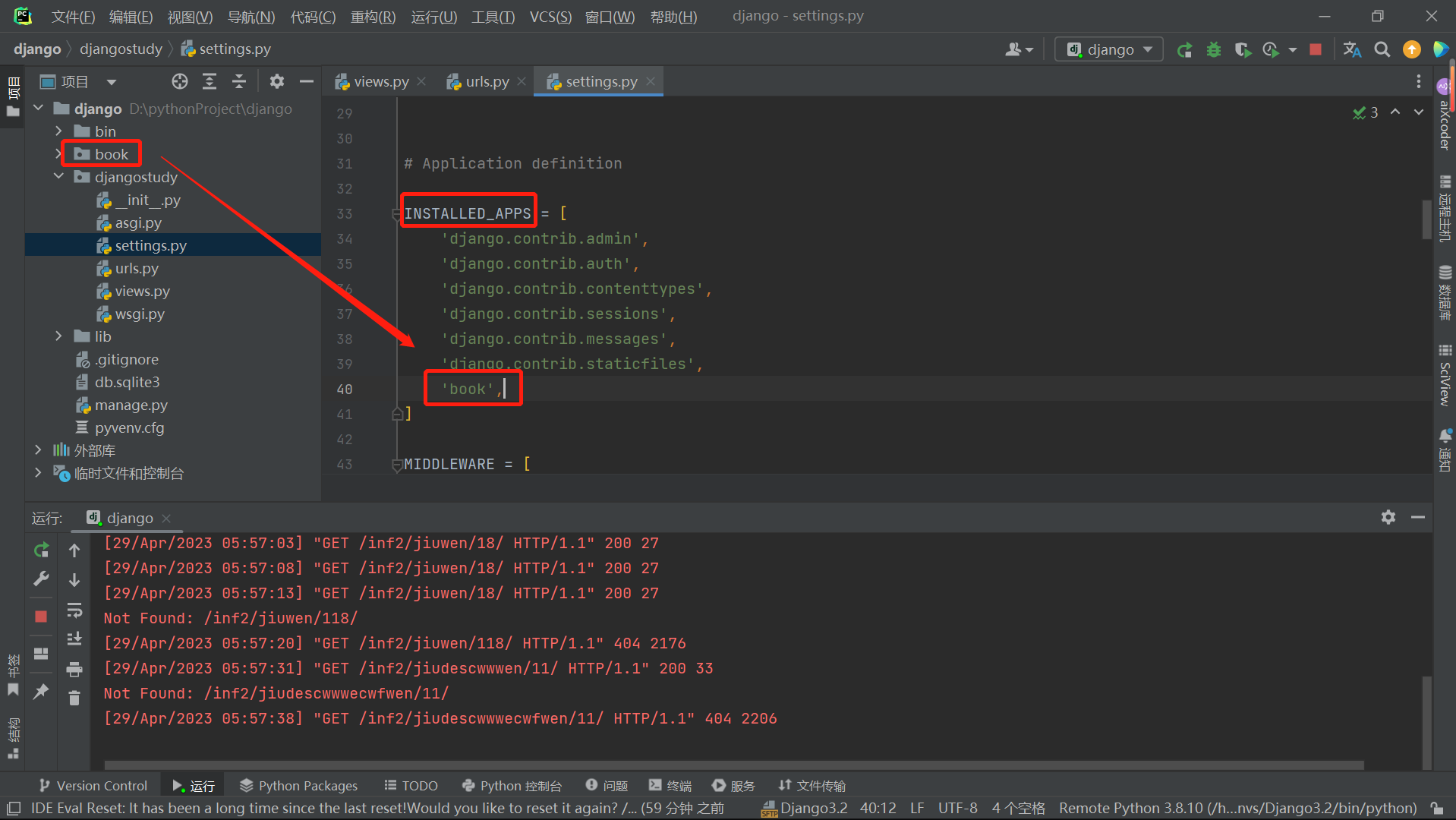
The role of include

Need to be imported into the main project
from django.urls import path,include
urlpatterns = [
path('admin/', admin.site.urls), path('book/',include('book.urls'))
]
APP-views.py
from django.http import HttpResponse #响应前端页面对应的模块
def yq(requests):
return HttpResponse("这是言情小说")
The role of kwargs
Main urls.py file
from django.contrib import admin
from django.urls import path,include
urlpatterns = [
path(‘admin/’, admin.site.urls),
path(‘book/’,include(‘book.urls’),{‘switch’:‘true’}),
]
#book-views.py文件
def yq(requests,**kwargs):
return HttpResponse(f"这是言情小说{
kwargs['switch']}")
The role of name
used as redirect
-
book-view.py
from django.shortcuts import render,redirect,reverse#导入重定向需要的两个模块 -
book-urls.py
urlpatterns = [ path('yq/',views.yq), path('yq_new/',views.yq_new,name='yq_new') ]
template rendering
-
Create a new templates directory under the same level directory of the main project to store each template.
-
Import in main project-settings.py
-
import os BASE_DIR = Path(__file__).resolve().parent.parent #默认有的获取到总项目目录 -
Add the templates path here:
-
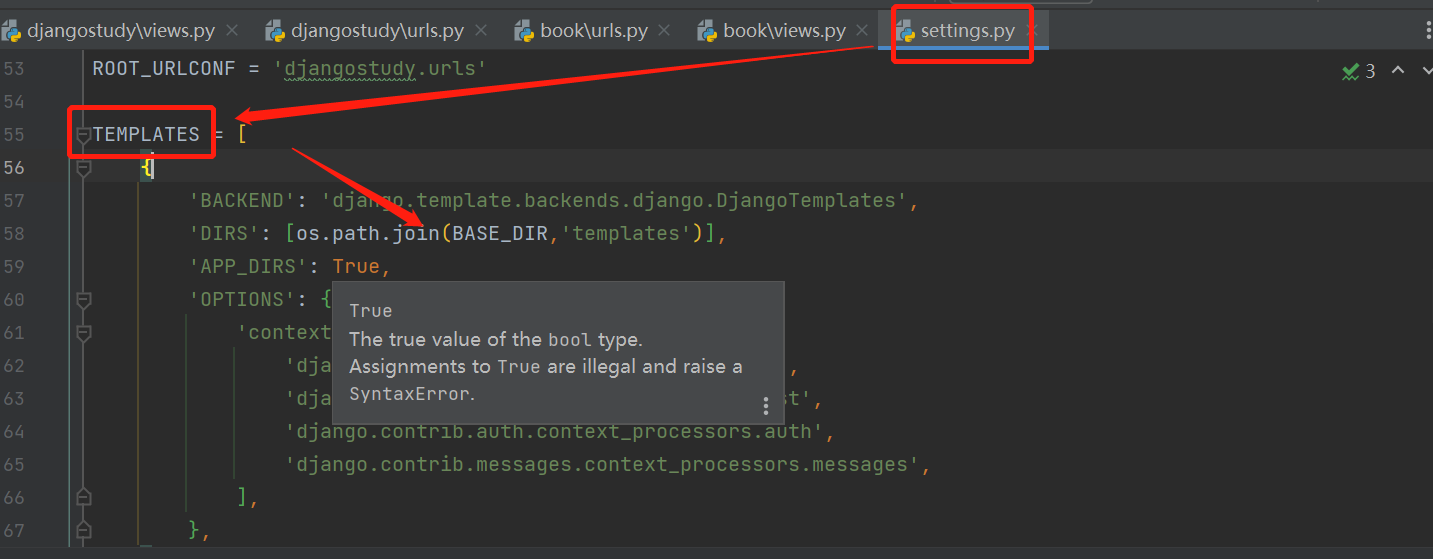
-
Load module
from django.template.loader import get_template#加载html模板文件的路径 -
under views.py
def yq(requests,**kwargs): reg = get_template('book_yq.html') html = reg.render()#渲染 return HttpResponse(html) #或者直接return render(requests,'book_yq.html')